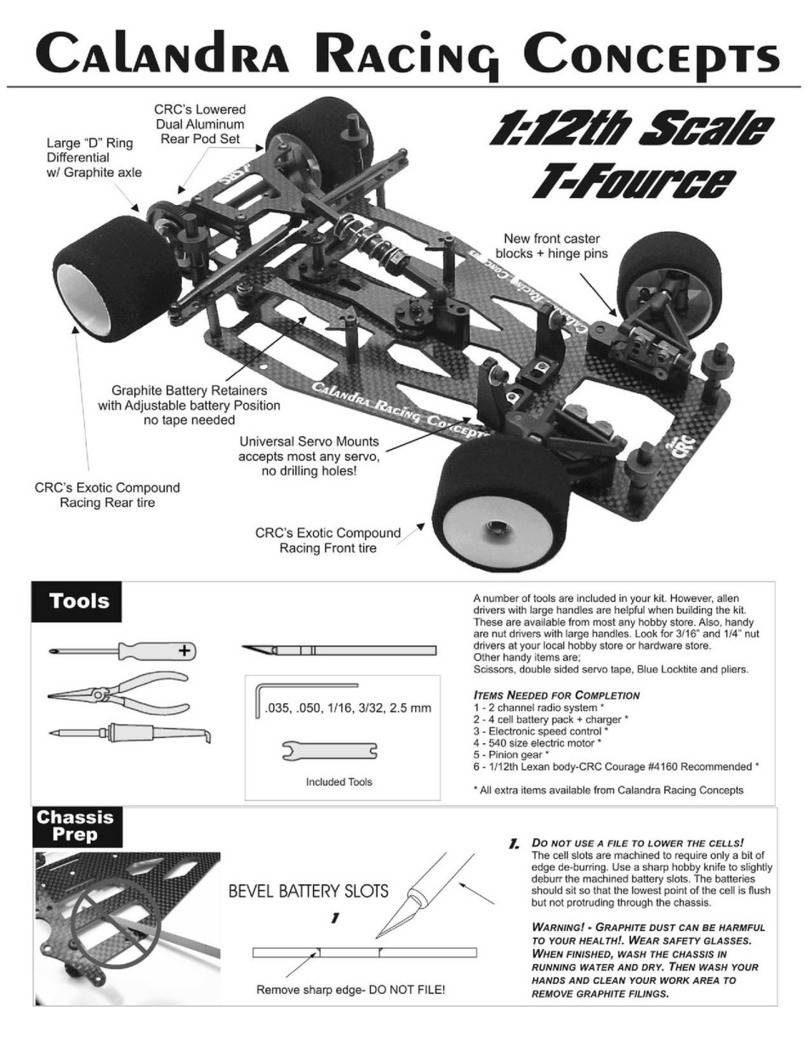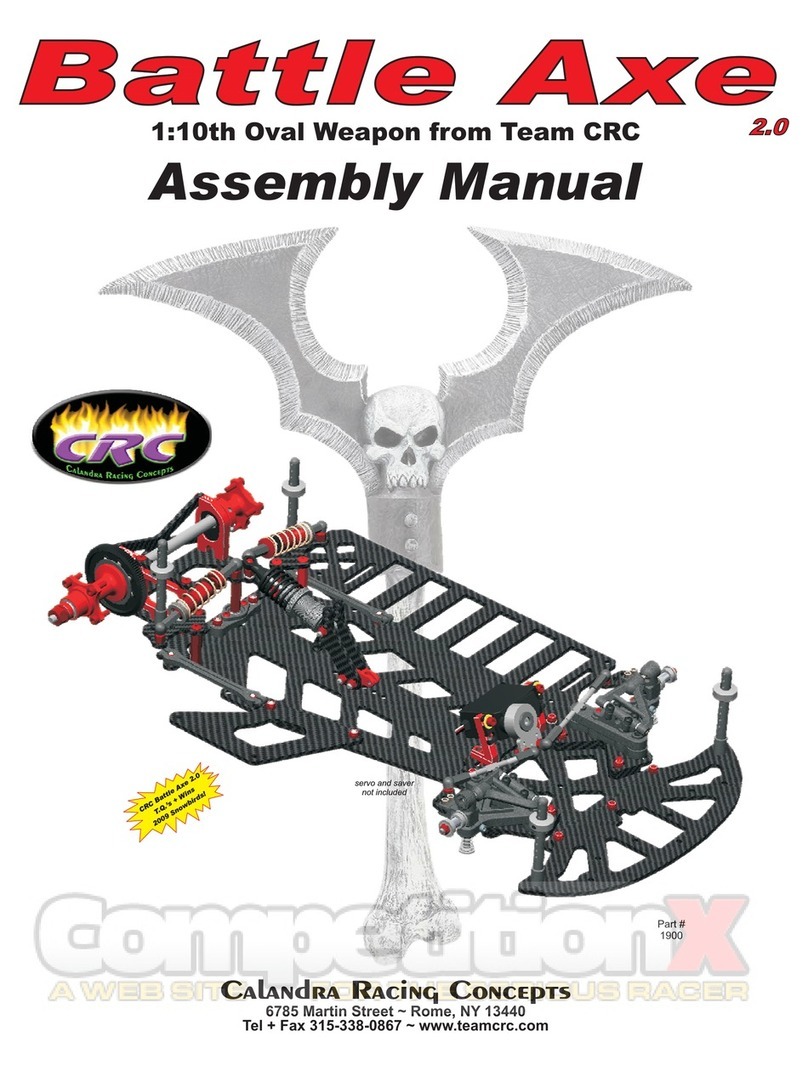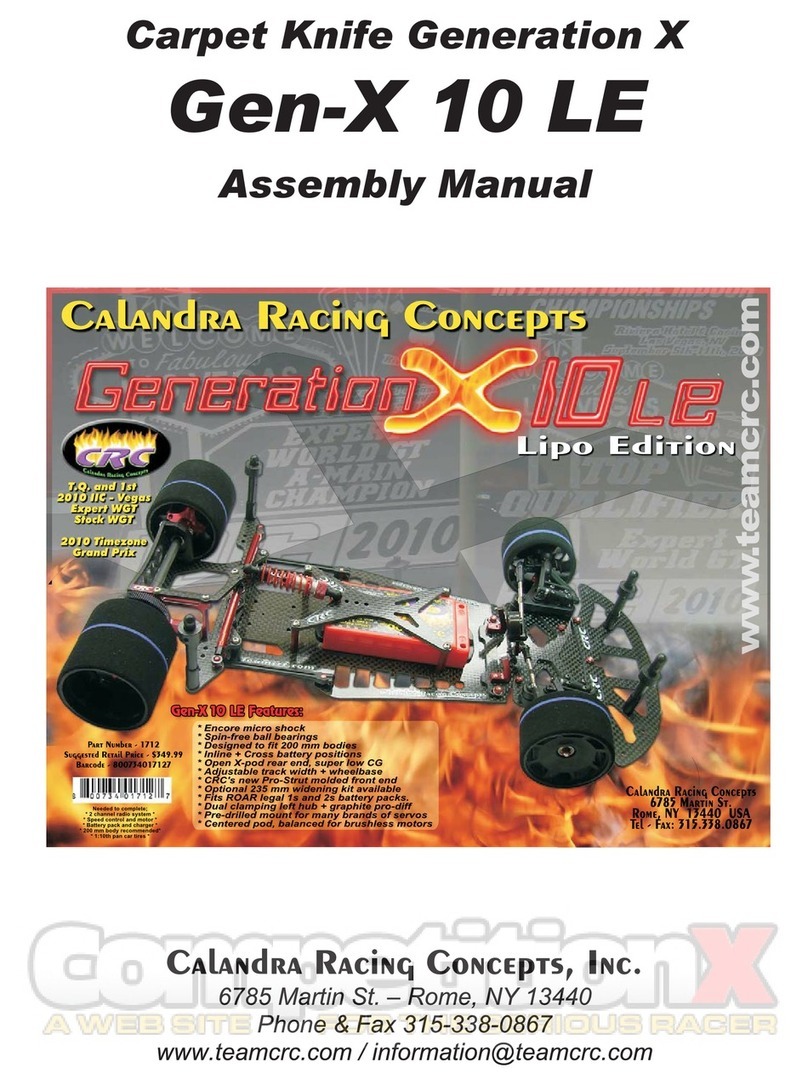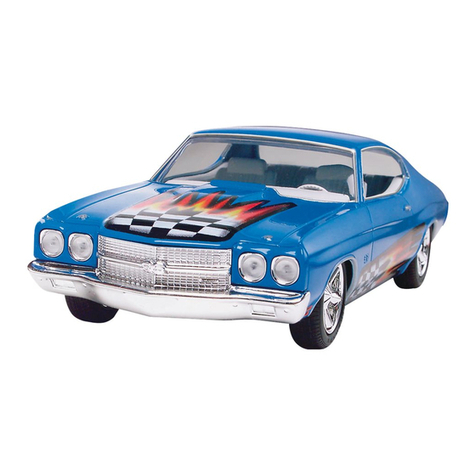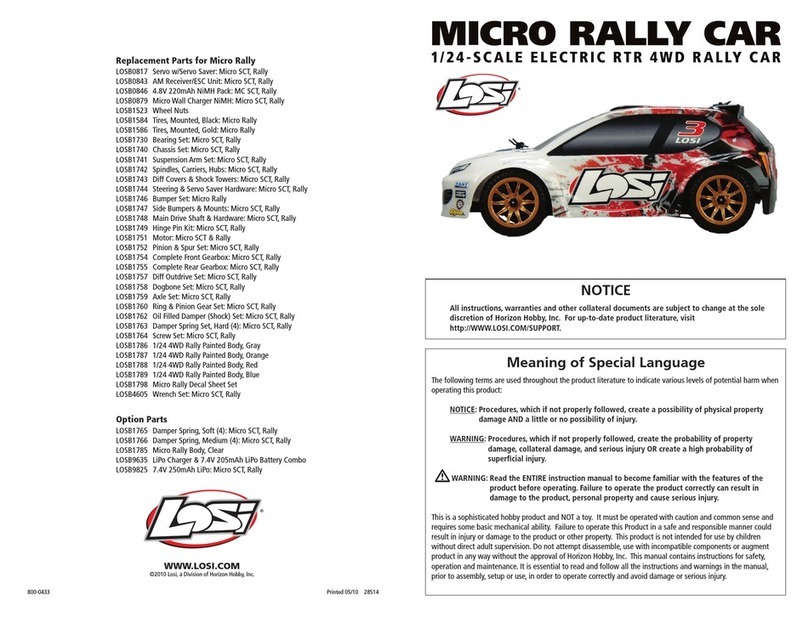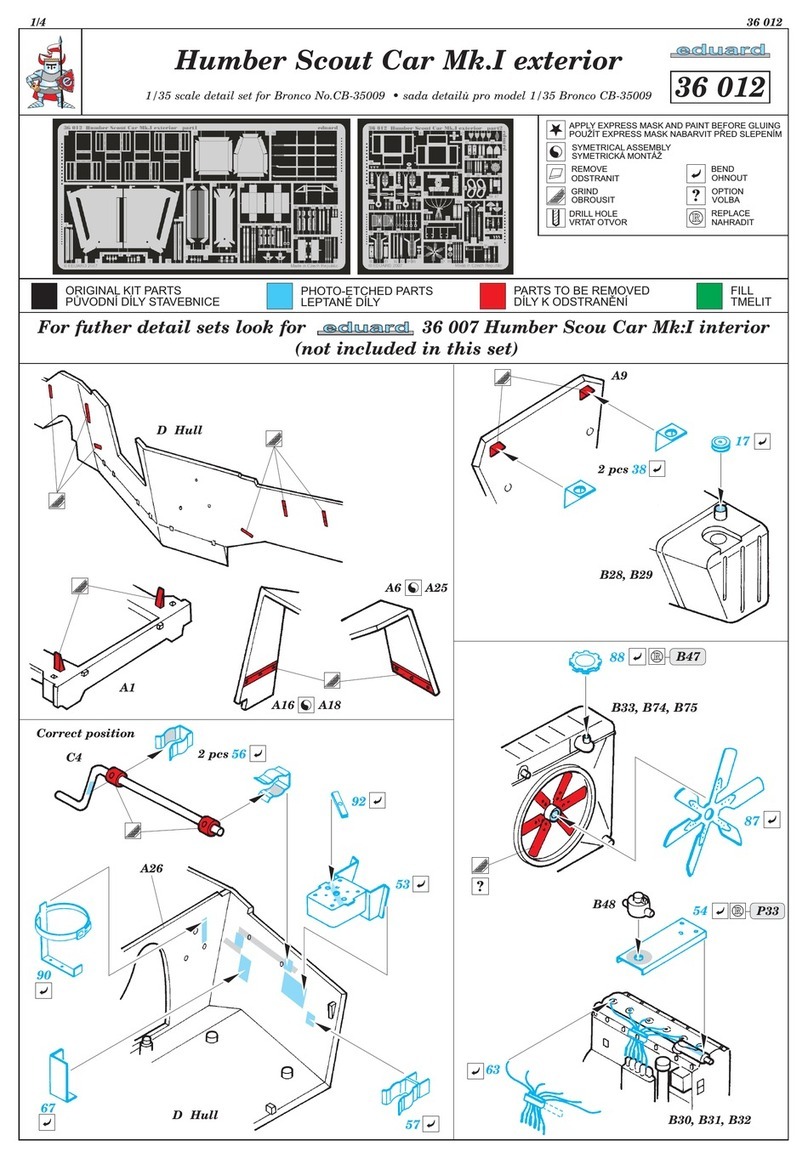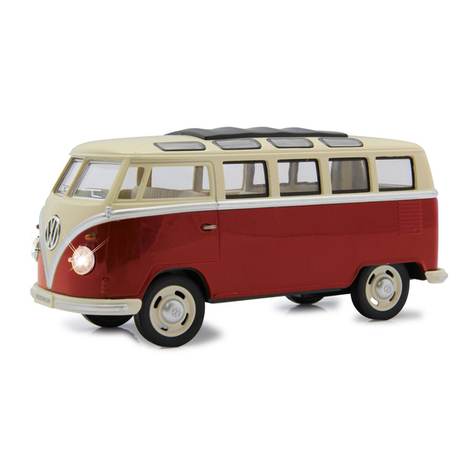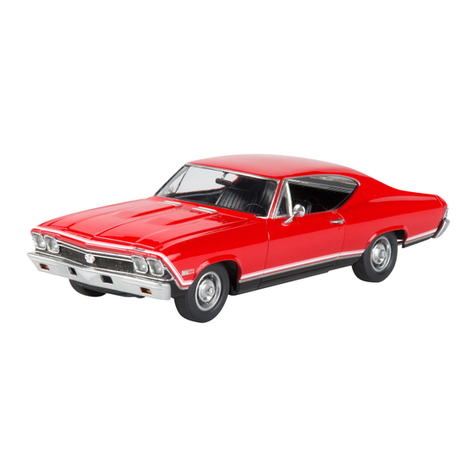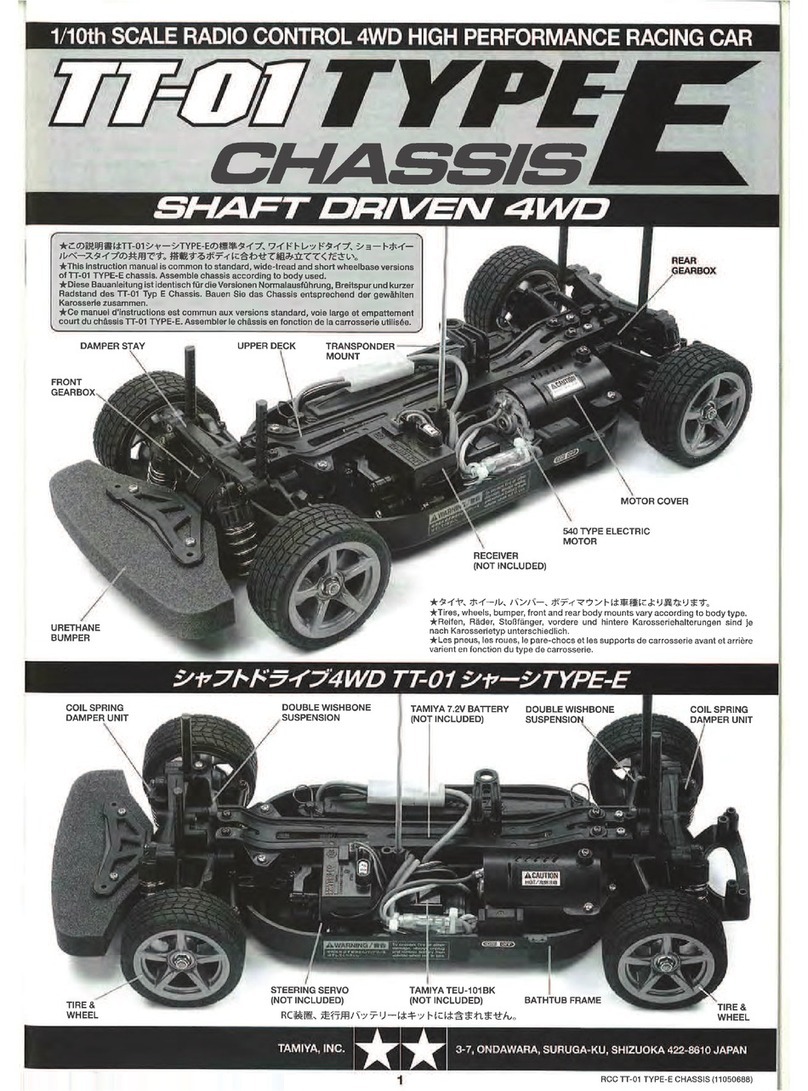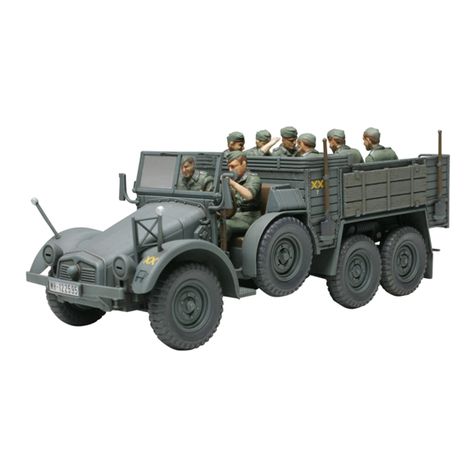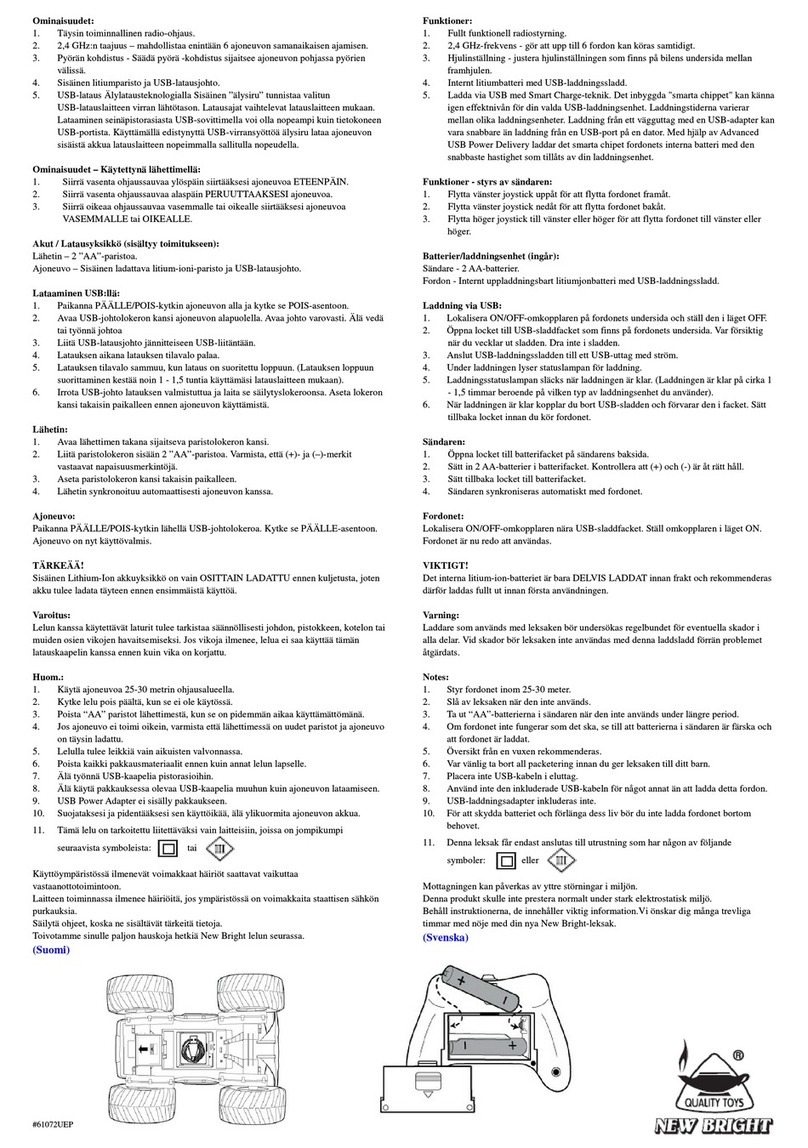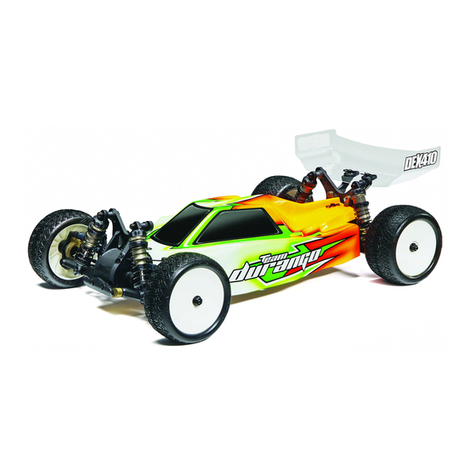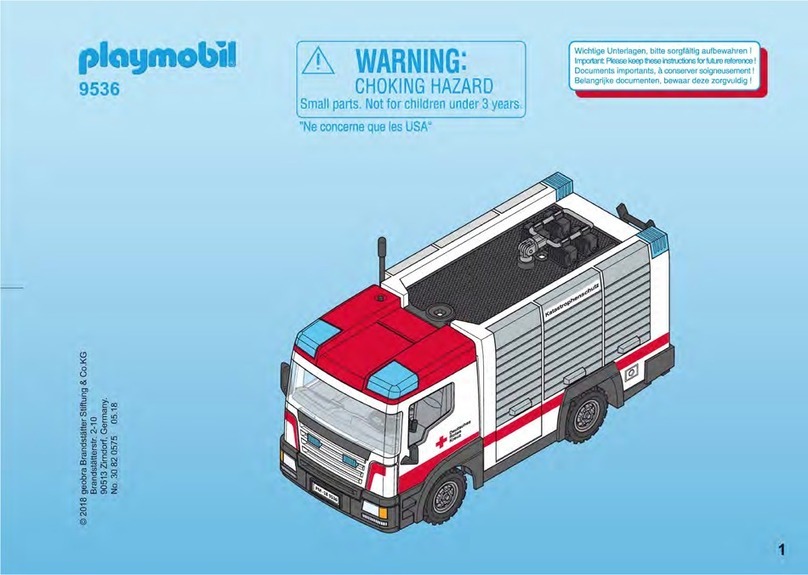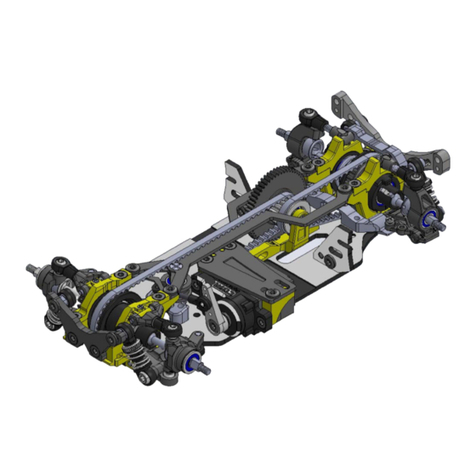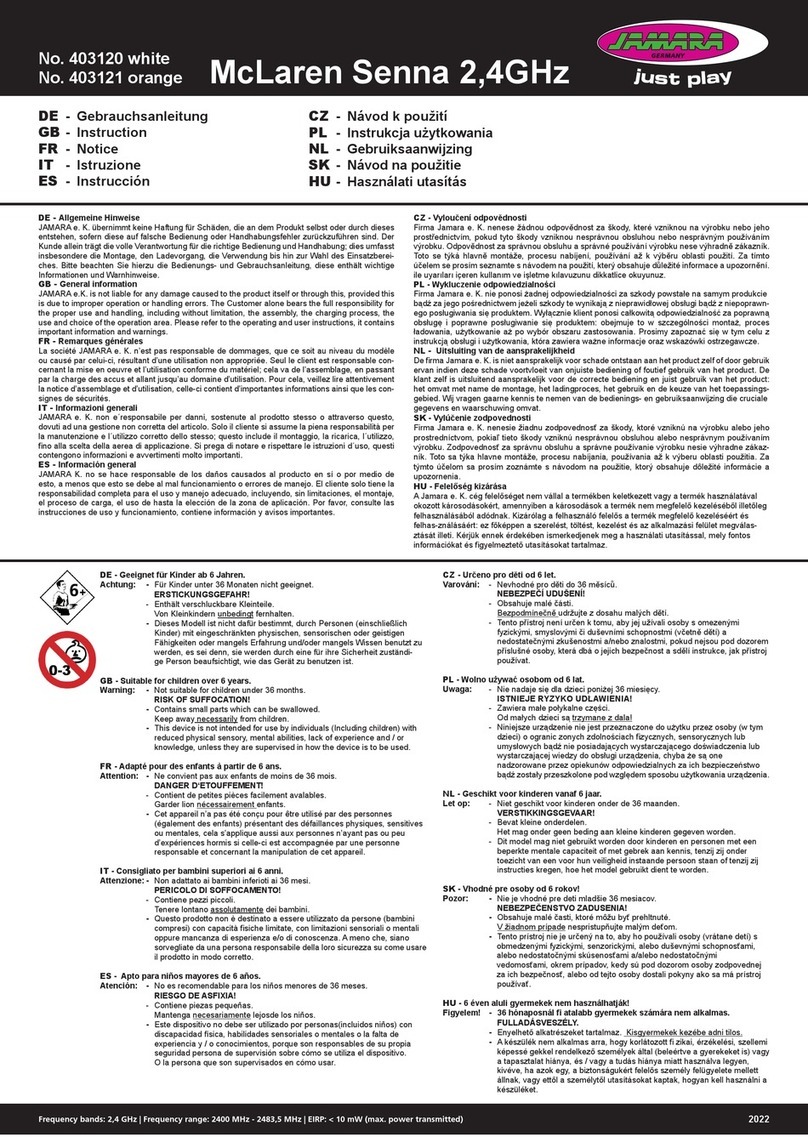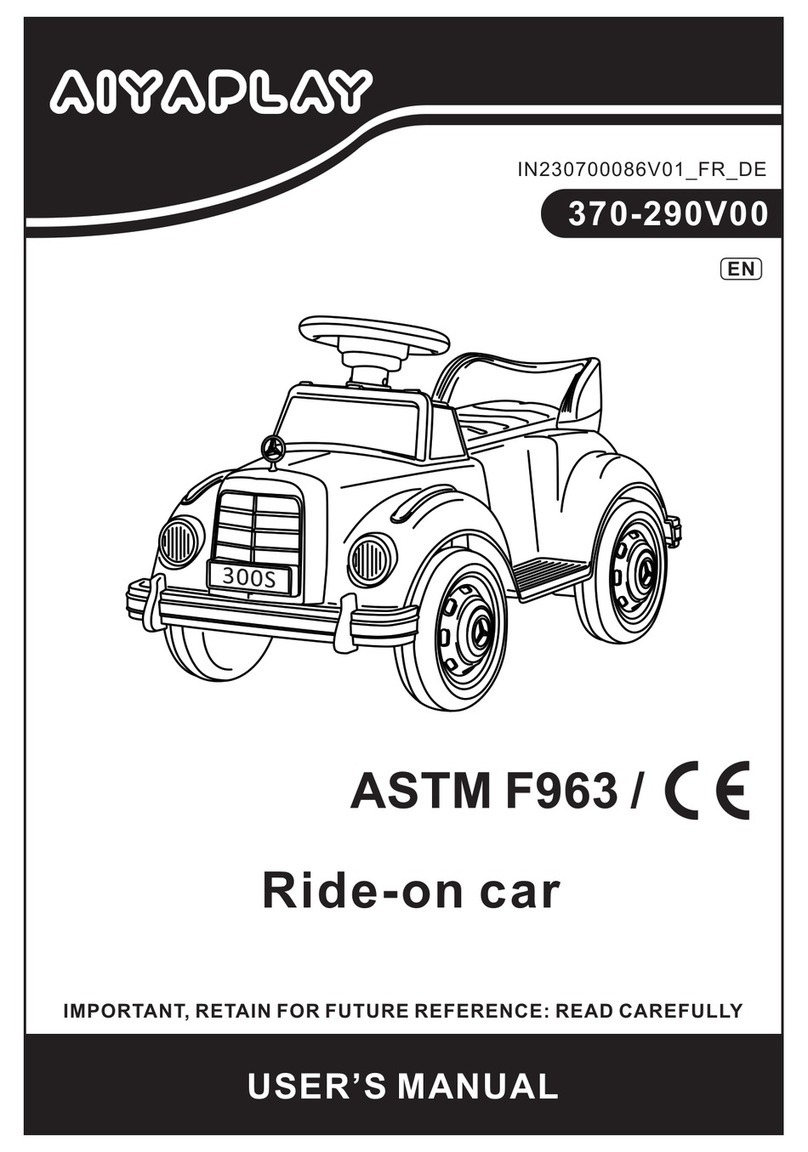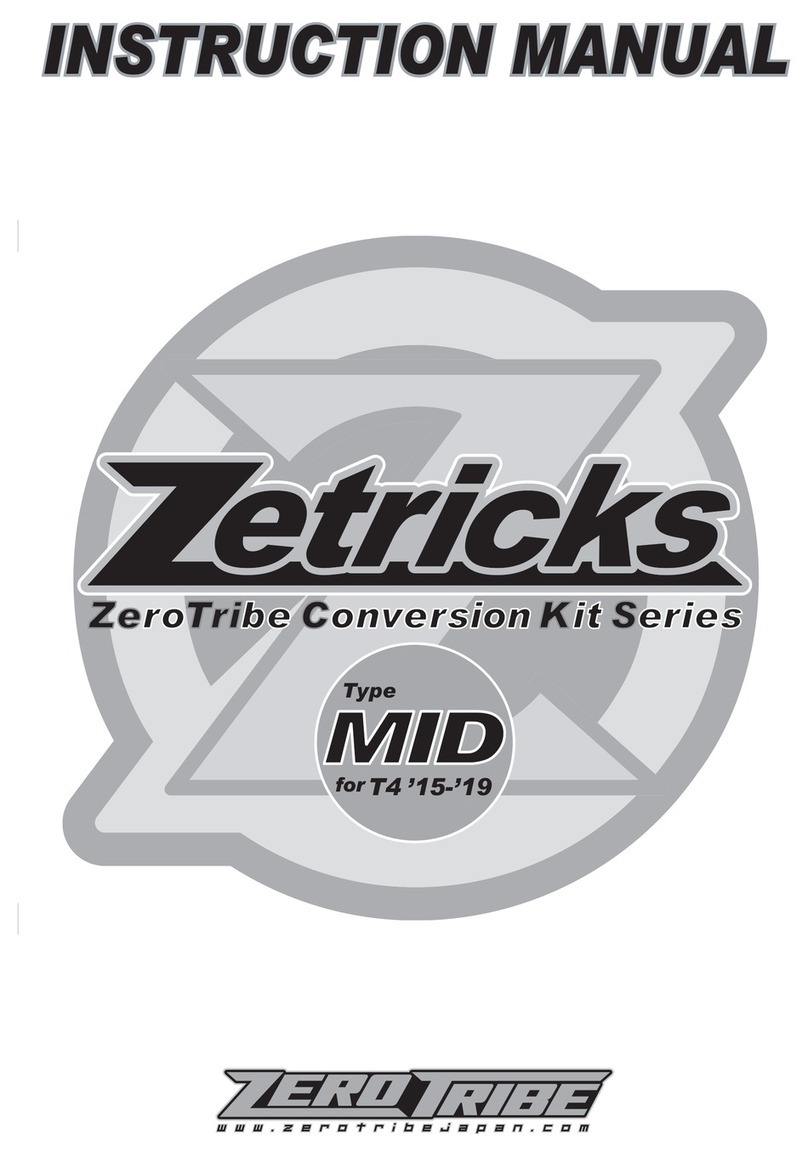
Bag 2
4-40 x 5/16”
FH steel 4-40 x ½”
FH Steel
Red Low-
Profile Ball
1 - In Bag 2, find the graphite bottom plate
[10]. Secure it to the pivot ball assembly
with the ½” flat head screw [5] and tighten
it with the red locknut [9].
2 - Find the 4 red low profile balls [11].
Secure them as shown with the steel 5/16”
screws [12]. Next, look at the plastic side
links [13] so that when you pop the links
on the balls, the larger hole will be facing
out, and the smaller hole facing the center
of the car.
3 - Insert the 2-56 button head screws [4]
into the side links from the outsides of the
chassis as shown. The screw should
easily slide through the larger outside
hole, and then thread into the smaller
inner hole. Only tighten them enough so
that the links will not pop off the balls.
You want the links to pivot very freely
without any drag.
Be sure the 2 aluminum locknuts on top of the center pivot are slightly loose.
There should be a washer under each alum locknut. Notice that the center pivot
“floats" or moves slightly on the 2 screws. This "floating" allows the links
to "free up". This ensures that the rear bottom plate pivots freely on the links
and center pivot ball. This is a crucial step when setting up the Xti.
Snap the 2 links on the balls as shown above. They should rock freely on
the pivot balls.
Place the chassis/rear bottom plate assembly on a flat surface. No tires and
no diff on the car! A smooth table or desk should do. Be
sure that the rear bottom plate and chassis are in a
straight line, flat against the table, again, no tires on the
car. Lightly “tap” the chassis and rear pod releasing any
tension in the links. Keep the chassis flat on the table for step 4.
Holding the chassis at the hold point “H” by pressing
the chassis down to the table. Slowly tighten the 2 locknuts that
secure the center pivot. For now, just lightly
snug one side then the other.
Pick up the car and check the pivoting action of the
rear lower plate. Rotate the rear plate from side-to-
side. It should move free without binding or "clicking".
If it does not, loosen the pivot locknuts and repeat steps 3+4.
If it rotates smoothly, then set the chassis back on the table and continue
to tighten the locknuts on the center pivot more securely. Do this by again holding
the chassis down to the table at the hold point “H”. Alternating back and forth between
the two lock nuts, fully tighten the lock nuts that hold the center pivot to the chassis.
The handling of the Xti hinges (pun intended!) on the free movement of this rear plate.
Be sure that the rear links and rear plate are free and not binding in any way.
(not the rear pod)
H
H
1.
2.
3.
4.
5. 5
Rotate
Center Pivot
Setting the One-piece links
2
Red
Locknut
9
11
12 52-56 Button Head
4
10
5
9
11
12
13
4
